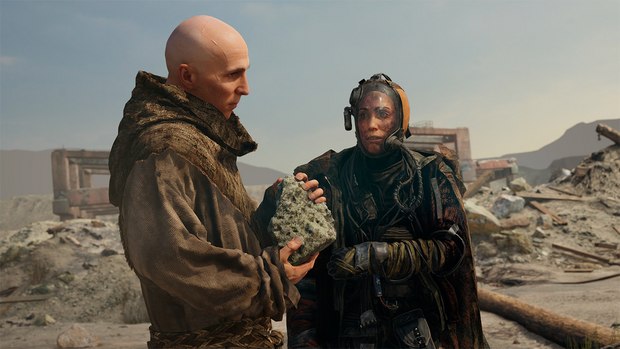Filmmakers used engine to achieve results quickly, easily and in real-time.

‘ADAM: Episode 3’ was made by director Neill Blomkamp and OATS Studios using the Unity 2017 creation engine.
SAN FRANCISCO -- Unity Technologies has released ADAM: Episode 3, on YouTube, created by Academy Award-nominated director Neill Blomkamp and OATS Studios using Unity 2017.
This is the third installment in the ADAM franchise, a visually-stunning series that explores a world where human prisoners have had their consciousness transferred into the bodies of mechanical cyborgs.
“I have had the privilege of leading VFX on blockbusters like Fast and Furious 6 as well as story-driven sagas such as Zero Dark Thirty. In my years, I’ve never had a more powerful and instantly responsive toolkit than Unity,” said Chris Harvey, VFX supervisor, OATS Studios. “Working in real-time in Unity 2017 gives the team the flexibility to make important creative changes without having to suffer the consequences of reshoots, saving us time and money.”
The original ADAM, created by Veselin Efremov, was released in 2016 as a short film to demonstrate technical innovations of Unity. It won a Webby Award and was screened at several film festivals, including the Annecy Film Festival and the Nashville Film Festival. ADAM: The Mirror picks up after the end of the events of ADAM where the cyborg hero discovers a clue about what and who he is. ADAM: Episode 3 gives viewers their first glimpse of one of the villains in the ADAM universe.
OATS was founded as an indie film studio that experiments with the latest filmmaking technologies, and its work on the ADAM franchise is the first time they have worked in a real-time creation engine like Unity 2017. Harnessing the power of real-time rendering, OATS used Unity 2017 to create photorealistic graphics and lifelike digital humans. This was achieved through a combination of Unity’s advanced high-end graphics power, new materials that use the Custom Render Texture feature, advanced photogrammetry techniques, Alembic-streamed animations for facial and cloth movement, and Unity’s Timeline feature.
“More and more of the world’s boldest filmmakers are choosing Unity to help bring their creative vision to life,” said Isabelle Riva, head of Made with Unity, Unity Technologies. “By shooting and rendering in real-time, Blomkamp and his team at OATS were able to achieve breakthrough visuals that stand as a monument to the level of graphics achievable on Unity. We can’t wait to see what the next wave of game developers and filmmakers create.”
ADAM: The Mirror and ADAM: Episode 3 were created back-to-back by a team of 25 people over the course of six months, and they demonstrate the latest technologies Unity 2017 has to offer. Innovations in these short films include:
- Lifelike Digital Humans in Real-Time: OATS created the best-looking human ever in Unity using custom sub-surface-scattering shaders for skin, eyes, and hair
- World’s First Alembic-Based Facial Performance Capture for Real-Time Using Unity: OATS created a new facial performance capture technique that streams 30 scanned heads per second for lifelike animation, all without the use of morph targets or rigs
- Virtual World Comes to Life Through Photogrammetry: Staying true to their live-action background, OATS shot more than 35,000 photos of environments and props and after the initial photogrammetry solve, imported these into Unity using the delighting tool. This allowed them to quickly create rich, complex environments and materials without the need to spend time to model high-resolution models
- Rapid Streamlined Iteration in Real-Time Unleashes the Power of Creativity: The power of real-time rendering lets artists and designers “shoot” the story as if on a set, with a live responsiveness that allows room to experiment and make creative decisions anywhere in the process
- Unity’s Timeline Backbone for Collaboration: Unity’s Timeline feature, a visual sequencing tool that allows artists to orchestrate scenes without additional programming, combined with multi-scene authoring to allow a team of 20 artists to collaborate on the same shot simultaneously.
Source: Unity Technologies







